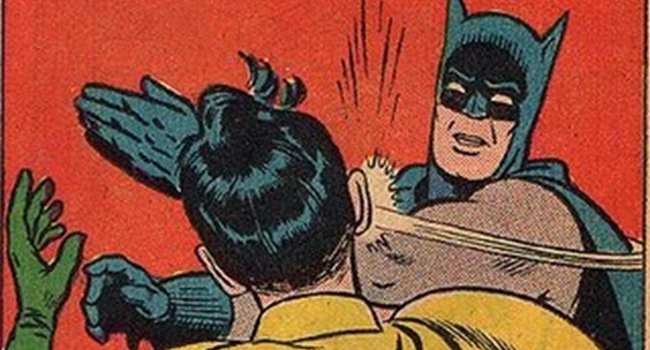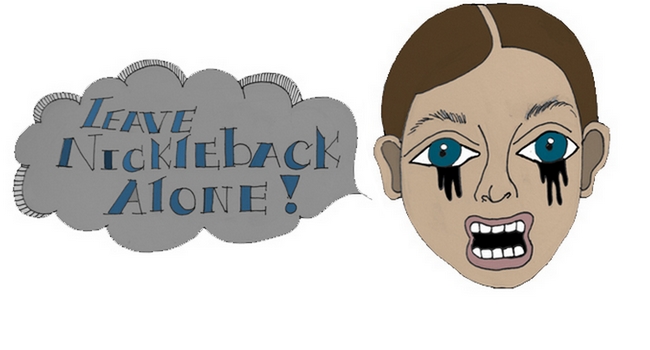 Markers of status are important in hip-hop. Due to the genre’s loose oligarchical structure, and because (most) rappers realize that carrying all their money around isn’t the easiest way to flaunt wealth, the rap game since 1990 resembles something of a ostentatious arms race.
Markers of status are important in hip-hop. Due to the genre’s loose oligarchical structure, and because (most) rappers realize that carrying all their money around isn’t the easiest way to flaunt wealth, the rap game since 1990 resembles something of a ostentatious arms race.
Cars, money, boats, more money, planes, gobs of money – the list goes on. The paradigm is pretty well fixed at this point too; backpack hip-hop, which held sway for the briefest of moments in the early ’00s and wasn’t overly obsessed with grandeur, has almost vanished.
If the rap game is going to continue to place gargantuan importance on one-upsmanship, and at a certain point there must be a logical end to the amount of gaudiness the rap game can produce, well, what then?
What then, precisely, is what is happening in hip-hop now. While the rest of society is cooling from two years ago’s Occupy Movement, hip-hop just now seems to be forming a ruling class, a One Percent. While these figures aren’t exactly reviled in the same way say, Goldman Sachs executives are, it follows that there would be an ever widening gulf between the have-alots in rap, and the haves, saying nothing of the have-nots.
Instead of merely contenting themselves with quantity – more cars, more clothes, more of everything the traditional artist raps about – this new ruling class seems focused on another rarefied stratosphere of oligarchical class: art.
Which brings us, of course, to Kanye West.
The future Mr. Kardashian started out simply enough. A successful early career bubbling behind Jay-Z as a beat man turned into hype driven emergence as backpack rap’s Great Hope, which then morphed into super stardom via Jon Brion and a preponderance of hooky club hop. Yet, since the untimely passing of his mother, Donda West, and the accompanying album chronicling such lost (808s and Hearbreaks), Kanye has somewhat bizarrely turned his affectations toward high art, shirking all manner of traditional hip-hop success measures. This shouldn’t have been too unexpected given Kanye’s childhood. Raised by a professor, he briefly attended a not entirely unprestigious art school.
A funny story – lower high class fashion brands Gucci and Louis Vuitton prevented the release of the rapper T.I.’s video for “Swing Ya Rag,” which prominently featured the rapper doing what the songs titled says he should with the brands’ logos. A former drug dealer and convicted felon was swinging their lucrative brand in a music video about partying – the troubling connection was easy enough to see for the brands. Hip-hop had been making associations to the two brands for ages, yet the overt references to rappers actually possessing the garish handkerchiefs was then too much a stain on a pair of venerable companies’ PR.
Fast forward nearly half a decade and there is Amber Rose, infamously famous model for Louis Vuitton, on Kanye West’s arm, only to sprightly hop ship to wed Pittsburgh rapper Wiz Khalifa. While her social circle doesn’t necessarily officially endorse Khalifa or West in the eyes of Louis Vuitton, it does signal that high fashion was beginning to accept the new ruling class of the culture industry – monstrously wealthy rappers.
This still young decade has only seen the paradigm get worse. West has descended into full-bore high art insanity, going on epic twitter rants about the state of his throw rug’s cherubim, editing his voice to such a degree that it sounds like he’s sampling opera (“H.A.M.”) and hiring noted contemporary artists for his album art (George Condo for My Beautiful Dark Twisted Fantasy). Conversations at fashion week events concern whether West or Jay-Z will show up, whether they’ll bring their beaus and what they’ll wear.
Despite Gucci and Louis Vuitton’s apparent disdain for the form, hip hop has invaded fashion and art in a way that reminds us exactly what hip hop has become: a ruling class.
High Art, by its very nomenclature, is bourgeois. Only a select few get to fall in the same stratosphere of Givenchy, Guy Bourdin, Tom Sachs or arc Newson. It just so happens that the ascent of Kanye West, the Clown Prince of the Rap Game, cleanly demarcated the point at which the One Percent of hip-hop belonged in that stratosphere. Jay-Z, Kanye West, Drake – the influences of modern hip hop are just as interested in seemingly well cultured as phenomenally rich since, as West found out, being well cultured implies phenomenal richness.
Before Justin Timberlake scuttled around a jam-packed Coppertank Events Center in Austin,TX and announced his reemergence to the world, SXSW had two very interesting acts play that indicate a growing dichotomy between hip-hop’s ruling class and it’s upstarts. Seeking to become one with a ruling class that has just barely eluded him, Usher Raymond brought out fantastically artsy, reclusive ’90s rock act The Afghan Whigs to play with him at the Fader Fort. It was an overt turn, one designed specifically to hit the hipster pleasure centers at play during Austin’s biggest week. It also illustrated the power Kanye West’s interpretation of what considerable power and wealth are in hip-hop – the rare, the highbrow and the bizarre all exude more confidence in your product than gobs of money ever could. Usher announced himself to the ruling class by proving his indie rock encyclopedic cred.
All the while, Stubb’s BBQ was hosting an entirely different phenomenon, one that didn’t need offbeat, classicist touchstones to feel of a moment and powerful. All it needed, really, was Kendrick Lamar. The Compton rapper displayed cuts from his last two masterful albums (Project 80 and good kid, M.A.A.D. City) with little fanfare other than his backgrounded beat man and the occasional request to “put your threes up.” Lamar mentioned that good kid was on its way to platinum, yet didn’t feel the need to address his widening status in the rap game with any sort of fanfare. It felt almost as if one of rap’s Ninety-Nine Percent were asserting his leadership status.
Whether the analogy of the Occupy Movement in hip-hop ever comes to societal confrontation is debatable; hell, Lamar just released a remix of “Bitch Don’t Kill My Vibe” with Jay-Z. The analogy holds, however, when thinking about the movement towards capital “A” Art that Kanye West has shepherded since his second record, Late Registration. Proprietors of the rap and hip-hop games have long used possessions as the ultimate status symbol. While West certainly doesn’t divert from this aesthetic (“$6,000.00 pair of shoes”) he does imbue it with a sense of upper class snobbery (“I made it to the Paris News”). Such exclusivity will either become the norm, with people like Usher attempting to distinguish themselves by finding even more esoteric points of reference than the Afghan Whigs, or it will spark a whiplash effect back to the street-level dreams of being true to oneself, like Kendrick.
Regardless, Kanye West, despite the I-can-and-you-can’t tone and reference points of the first line, is right when he says “Dinner with Anna Wintour, Racin’ with Anja Rubik / I told you mahfuckers it was more than the music.”





